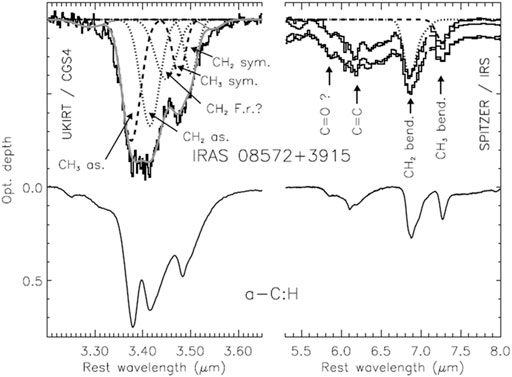
Title: Fullerenes May Provide Insights into Hydrogen Production in the Chilly Regions of Space
An essential inquiry in astrochemistry — how molecular hydrogen (H₂) forms in the icy and thin environments of interstellar space — could have found a new explanation. A recent theoretical analysis indicates that fullerenes, spherical carbon-based molecules often referred to as buckyballs, may facilitate the creation of H₂ in interstellar clouds, even under extreme temperatures varying from nearly absolute zero to thousands of kelvin.
This advancement offers encouraging perspectives on one of the universe’s most fundamental chemical phenomena: the production of molecular hydrogen, the most prevalent molecule in the cosmos and a crucial phase in forming more intricate molecules.
The H₂ Formation Riddle in Space
In typical interstellar conditions, space is predominantly cold (approximately 10 K) and nearly entirely devoid of matter. The likelihood of two hydrogen atoms colliding — resulting in a stable H₂ molecule — in such an environment is remarkably low. Even if such a collision occurs, the energy discharged during the bond formation is generally sufficient to destabilize the newly created molecule, resulting in its breakdown.
“The creation of molecular hydrogen through direct collisions between two hydrogen atoms is minimal,” comments David McKenzie, a materials physicist at the University of Sydney. This inconsistency has long confounded researchers, leading to theories suggesting that other entities in space, like dust grains, function as catalysts, enabling hydrogen atoms to bond more readily.
The Function of Fullerenes
The latest study by McKenzie and his colleague, physicist Yuzhen Guo, posits that fullerenes — carbon molecules comprising 60 atoms arranged in a soccer ball shape — could act as effective catalysts for hydrogen production. These molecules are not just structurally robust and common in laboratory settings, but there is significant astrophysical evidence corroborating their existence in space.
Guo and McKenzie contend that fullerenes provide a valuable framework for examining chemical processes in cosmic dust due to their structural resemblances to the carbon-rich compounds found in interstellar conditions.
Modeling Hydrogen Production on Fullerenes
Employing computational models, the researchers investigated two main mechanisms by which H₂ might form on fullerene surfaces:
1. Surface Diffusion Mechanism: Two hydrogen atoms physically adhere to the surface. They can move (diffuse) and meet each other, resulting in the formation of a molecular hydrogen pair.
2. Direct Impact Mechanism: A free hydrogen atom collides with another hydrogen atom that is already chemically attached to the fullerene, leading directly to H₂ formation.
Importantly, their simulations revealed that once molecular hydrogen forms on the fullerene surface, it tends to desorb (detach from the surface) quickly. The fullerene captures the reaction energy, and the H₂ molecule is repelled, preventing its dissociation. This circumvents the reverse reaction, boosting overall H₂ production.
Feasibility Across Extreme Temperature Ranges
A notable finding of the study is that this catalytic effect could function across an exceptionally wide temperature range. The model indicates that hydrogen atoms can generate stable H₂ molecules on fullerenes at temperatures as low as 10 K — even colder than liquid helium — where previously, no physical or chemical adsorption was thought to be feasible.
Even more fascinating, the process remains effective under high-energy circumstances, such as near supernova shocks or energetic stellar environments, with modeling indicating hydrogen formation at temperatures as high as 6000 K. This suggests that fullerenes may help sustain hydrogen levels in both tranquil and tumultuous cosmic environments.
A Step Toward Unraveling the H₂ Enigma
Nigel Mason, a molecular physicist at the University of Kent not associated with the study, commends the research as an “interesting contribution” to addressing a highly intricate issue in astrochemistry. “The production of molecular hydrogen under astronomical conditions is the most fundamental chemical process in the universe, laying the groundwork for the evolution of more complex chemistry,” he underscores. However, the precise mechanisms remain poorly understood.
Mason also points out areas where additional investigation is warranted. Numerous cosmic dust particles have ice mantles, and more realistic models should incorporate these icy surfaces to fully comprehend how hydrogen forms across various interstellar settings. Nonetheless, Guo and McKenzie suggest that H₂ production via fullerenes may transpire in conditions prior to the complete development of ice layers.
Looking Ahead: Confirming Theory with Empirical Evidence
While the theoretical approach is intriguing, Mason emphasizes the necessity of experimental and observational confirmation. “Simulations alone cannot fully clarify the process,” he warns. Validating the model against astronomical spectral data or laboratory simulations under space-resembling conditions will be vital to substantiating fullerene-driven hydrogen creation.
Regardless, the study paves an exciting new path towards comprehending how the simplest, yet most cosmically crucial, molecule forms in the severe conditions of space. If further evidence corroborates this, fullerenes could emerge as vital components in the molecular chemistry that nurtures galaxies, stars, and